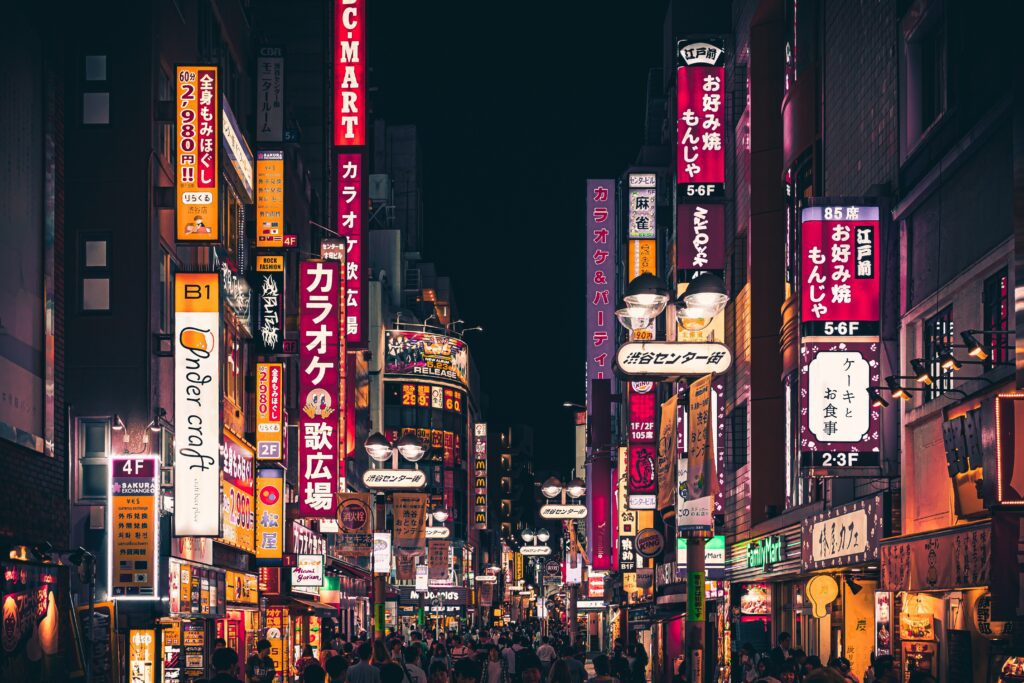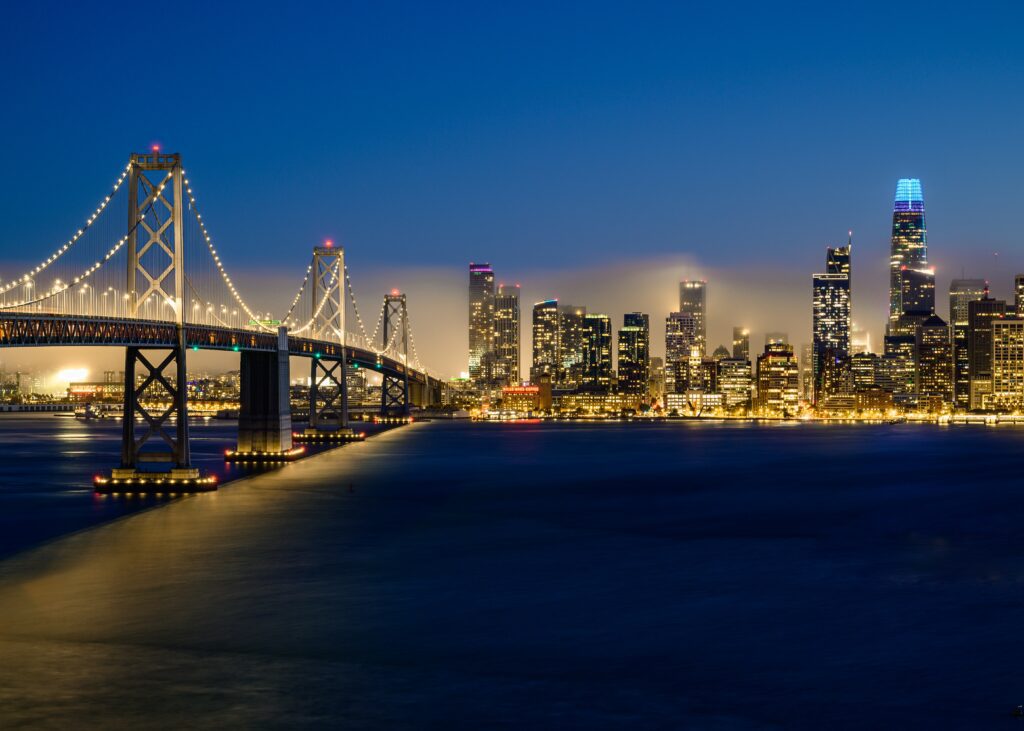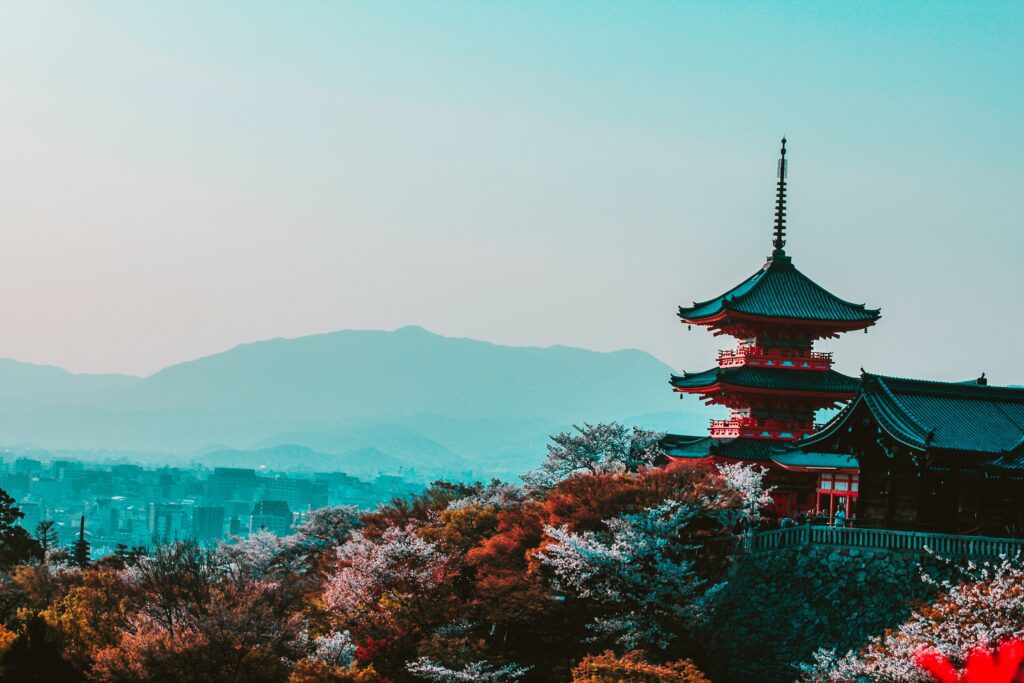Japan is a beautiful feast for tourists, serving you frenetic megacities, peaceful beach-lined islands, and onsen (hot spring) settlements on the mountainsides.
Although you could probably spend a lifetime exploring the country’s charms, some cities and locations are essentials that must include on any trip to Japan. The top ten destinations in Japan are listed below.

- Tokyo
Considered Ideal for Modern Culture
Tokyo is a city that is constantly looking toward the future, pushing the limits of what is practical in a heavily populated, earthquake-prone area by erecting ever-taller, more streamlined buildings. It is a broad, organic structure that stretches as far as the eye can perceive. It is the best location in Japan for modern art and architecture, popular culture, shopping, consumption, and entertainment (and a tie with Kyoto for dining). Visitors are most mesmerized by the city itself rather than any one attraction. Tokyo is a city that is constantly developing and has a wide variety of neighborhoods, so no two visits are ever the same.

2. Kamikochi
Ideal for mountain climbs
Kamakshi, a highland river valley encircled by the towering peaks of the Northern Japan Alps, is one of Japan’s most breathtaking natural scenes. There are simple day treks through serene willow, larch, and elm forests along the pristine Azusa-gawa that are accessible. Kamakshi, the cradle of Japanese alpinism, is the starting point for more challenging hikes up some of the country’s tallest mountains, like Yari-ga-take (3180m). Because private vehicles are not permitted in Kamikchi, the effect of the crowd is diminished.

3. Osaka
Best for nightlife and eats on the street
Regarding urban experiences, Tokyo only claims some of the laurels. The city of Osaka, the third-largest in Japan, is the best for street cuisine. The city, the oldest commercial hub in Japan, has its speed, spirit, and joie de vivre; its unofficial motto is “kuidaore” (eat until you drop). Take advantage of its distinctive dish, takoyaki (grilled octopus dumplings). The most dramatic night scenes may also be found there, including a brilliant display of LED lights, dynamic signage, and flashing video screens along the canalside strip Dtombori.

4. Okinawa and Southern Islands
Preferable for beaches
A very different experience from the rest of Japan can be in Okinawa and the Southwest Islands. In an arch between Kyrgyzstan and Taiwan, this semi-tropical archipelago is located. They founded their own country before being annexed by Japan in the 19th century, the Ricky Empire, and the cultural contrasts can be seen everywhere, right down to the food and architecture. The most excellent beaches in Japan, such as those on the Yaeyama Islands and the Kerama Islands, can be found here. They include sugar-white sand surrounded by palm trees, turquoise water, and azure skies. Sunbathe or go scuba diving and snorkeling.

5. Koya-San
Best for visiting temples
Going up the tramway to the revered Buddhist complex of Kya-san feels like ascending to another world, which is quite fitting. There are over a hundred temples in this area, the most notable of which is Oku-no-in, whose walkways wind among imposing cryptomeria trees and weathered stone stupas coated in moss and lichen. Other temples provide a different kind of experience, like staying the night, eating traditional vegetarian Buddhist food, and getting up early to practice morning meditation with the resident monks.

6. Yakushima
Best for enjoying a nature bath
Small island Yakushima, off the coast of southern Kyushu, is frequently referred to as mystical, enthralling, and even otherworldly. Tropes fill the void left by words in this situation. The yakusugi, an old cedar native to the island whose enormous roots resemble alien tentacles, can be found in some of Japan’s last remaining ancient forests. Under them, hiking trails crisscross rocky ground frequently covered in moss. The famous Studio Ghibli animated film Princess Mononoke is thought to have drawn inspiration from this location’s environment.

7. Hiroshima
Best for reminiscing
Today’s Hiroshima is a progressive city with lovely green boulevards. The actual scale of the human tragedy caused by the atomic bomb is made vividly clear once you visit the Peace Memorial Museum. There are numerous opportunities for introspection in the museum’s surrounding park, which was created mainly by Tange Kenz, one of Japan’s greatest modernist architects. But you’ll have positive memories to take with you when you leave, thanks to the city’s spirit of perseverance and its cuisine. A trip here is a sobering, crucial history lesson.

8. MT. Fuji
Best for pilgrimages and views
The majestic Mt. Fuji will leave you speechless, even from a distance. The tallest mountain in Japan is nothing short of a stunning close-up with its symmetrical cone. From the summit, dawn? True magic One of Japan’s most revered and enduring tourist destinations is Fuji-san. Hundreds of thousands of people climb it every year, carrying on a centuries-old custom of pilgrimages to the revered volcano. Follow in the footsteps of Japan’s most renowned painters and poets if you’d prefer to look for picture-perfect views from the adjacent, less intimidating summits.

9. Naoshima
Preferred for architecture
One of Japan’s greatest success stories is the transformation of Naoshima, a rural island that was about to become a ghost town, into a premier hub for contemporary art. A number of the most well-known architects in Japan have donated buildings, including museums, a boutique hotel, and even a bathhouse, all created to accentuate the island’s natural beauty and blend in with its population. The ensuing fusion of contemporary art and rural Japan is mesmerizing. It has also motivated several Japanese to leave the big cities in search of a calmer pace of life, moving to Naoshima to start cafes and inns.

10. Kyoto
Ideal for traditional activities
More than a thousand temples can be found in Kyoto, which served Japan’s imperial capital for a thousand years. They range from the enormous, like Ryan-Ji with its austere Zen rock garden, to the peaceful, like Kinkaku-Ji, an elegant pavilion fully covered in gold leaf. Temples are just the beginning; there is also a rich culinary culture, such as kaiseki, and a tea culture that you can enjoy at one of the city’s many beautiful teahouses. There are also geishas and famous performers of traditional music and dance (Japanese haute cuisine).


